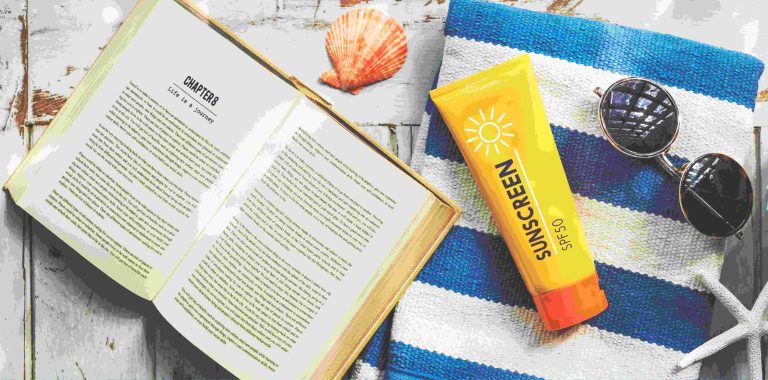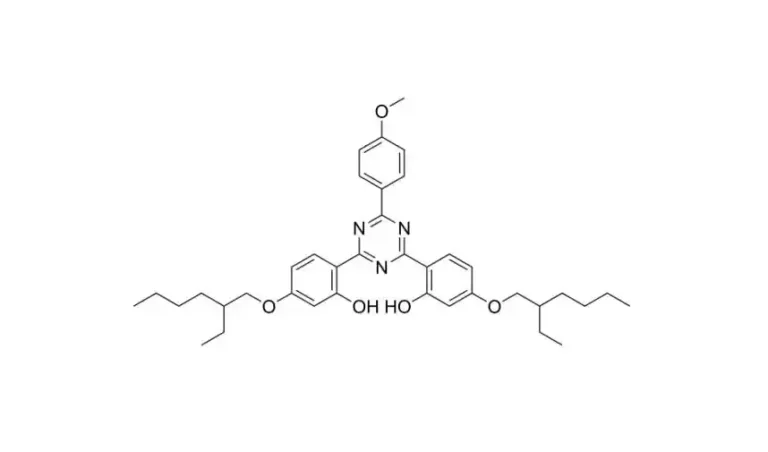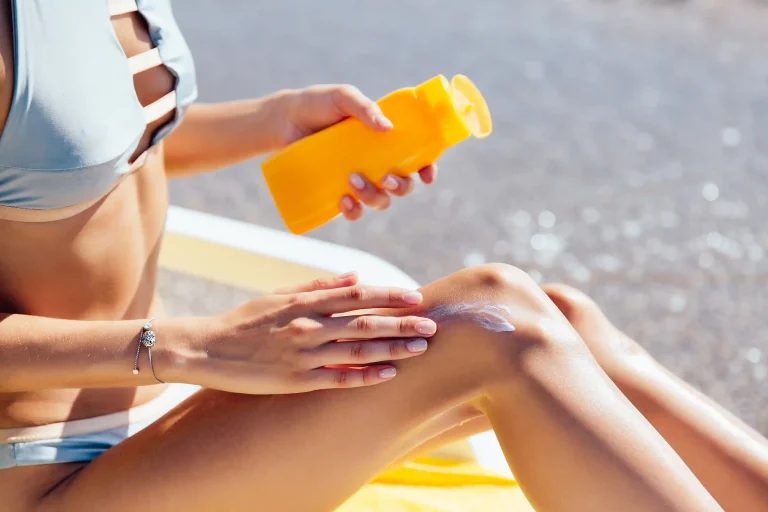What is Titanium Dioxide, and Why is it Being Used in Skincare
Titanium dioxide (TiO₂) is a naturally occurring mineral oxide used extensively in sunscreens and cosmetics because of its exceptionally good ability to block UV. It is also used extensively as a physical active ingredient in sunscreen, which scatters and reflects ultraviolet radiation and protects the skin from sun damage. Titanium dioxide also provides texture and opacity to products as well as protection from the sun, and thus is also employed as a multifunctional product ingredient.
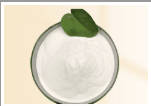
The Hydrophilic vs Hydrophobic Forms Difference
Titanium dioxide also exists in hydrophilic (water-attracting) and hydrophobic (water-repelling) forms. Hydrophilic titanium dioxide is readily dispersible in water products but is perhaps not so well suited to oily skin. Hydrophobic titanium dioxide has been surface-treated—most commonly with silanes or silicones—to water- and oil-repelling states and thus is an even better choice for oil-control products. The treatment also makes it more stable in emulsions and less likely to clump or break down upon exposure to UV light.
How Hydrophobic Characteristics Influence Skin Contact
Hydrophobic titanium dioxide adheres to the skin’s surface and won’t be absorbed, instead forming a sebum- and sweat-proof barrier. This is particularly beneficial on oily or acne skin as it blocks a matte look without disrupting the even spread of other actives. Because it won’t be absorbed, it also prevents pore clogging, which is a key concern for clear skin.
How Excess Sebum Affects Skin Condition and Appearance
Sebum overproduction may cause oily skin, big pores, blackheads, and acne. If sebum mixes with dead skin cells or dirt, it plugs the pores and offers a breeding ground for bacteria to thrive. Although it’s cosmetically important, it’s important to overall skin health to manage the oil.
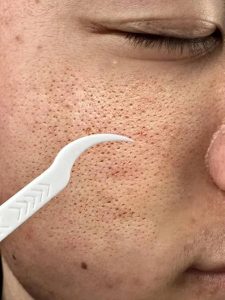
Ingredients Most Often Used for Oil Control
Conventional oil-controlling actives like salicylic acid (pore-exfoliating beta hydroxy acid), niacinamide (sebum secretion is controlled), clay minerals like kaolin or bentonite (oil-absorbing), and silica microspheres. Synergizing the above actives is hydrophobic titanium dioxide, which creates a physical barrier with prolonged activity of the above actives.
Physical and Chemical Behavior of Hydrophobic Titanium Dioxide on Oily Skin
On oily skin, hydrophobic titanium dioxide spreads uniformly without breaking down into the natural oils of the skin. It has a water-repelling surface coating and is also less susceptible to breakdown due to oils and perspiration. This is beneficial to it by enduring longer in regard to product integrity as well as oil absorption on a surface level.
Enhanced Sebum Absorption Qualities
Hydrophobic titanium dioxide is an excellent sebum regulator that rests on the surface of the skin and takes up excess oil throughout the day. It is not an absorber such as charcoal or clay, its treated particles diffuse oil preventers that regulate shine.
Increased Product Stability and Wear Time
Water- and oil-resistant hydrophobic titanium dioxide technologies are more resistant to wear, heat, and humidity. With these water- and oil-resistant properties, products achieve maximum wear time—so they’re ideal for active users’ long-wear sunscreens or foundation.
Contribution to Matte Finish and Shine Mitigation
One of the biggest positives of hydrophobic titanium dioxide is that it helps in providing an even matte look. It provides a sheer look by scattering the light over the surface of the skin without allowing the spread of excess oil, which will never appear to be cakey or dry—a godsend if applied in high-definition makeup.
Types of Skincare Products That Use This Ingredient
Sunscreens with Oil-Controlling Properties
Hydrophobic titanium dioxide is typically included in broad-spectrum sunscreens that are formulated for oily or acne skin types. The sunscreens contain strong UV protection in a non-oily formula that will not leave the skin feeling greasy throughout the day.
Mattifying Primers and Foundations
The majority of mattifying primers are formulated with hydrophobic titanium dioxide in the hope of imparting a smooth surface for makeup. Long-wear foundations also include the ingredient in the hope of halting oxidation caused by too much contact with sebum.
Daily Moisturizers for Oily Skin
Moisturizers for oily skin without oil will normally utilize hydrophobic titanium dioxide for the double benefit: sun protection and shine control without loss of moisture.
Compatibility with Other Active Ingredients
Hydrophobic titanium dioxide blends synergistically with other actives such as zinc oxide (another physical sunblock), antioxidants such as vitamin E, anti-inflammatories such as green tea extract, and exfoliants such as glycolic acid. Due to its inertness, low chemical reactivity can be blended with maximum formulation efficacy in a wide range of skincare uses.
Determining the Irritation or Sensitivity Potential
While they are well tolerated on the skin in general, particle size- or coat agent-associated irritation has occurred in some individuals with hydrophobic titanium dioxide products. Patch testing remains advisable in the introduction of new items with the ingredient in your regimen.
Acceptable Levels of Concentration in Cosmetic Products
Most regulatory authorities—e.g., FDA (USA) and EU legislation—place concentration limits on titanium dioxide by application (e.g., to 25% in sunscreens). Particle size range should be checked not to fall into nanoparticle size ranges, which will pose a danger of inhalation during production or aerosolized modes of application.
Regulatory Standards and Consumer Safety
Titanium dioxide has largely been considered safe as an ingredient when used within parameters. However, ongoing research in nanoparticle action under ongoing scrutiny is clearly decisive in future regulation based on airborne exposure versus dermal use, where essentially no risk exists.
Emerging Trends in Ingredient Innovation
The cosmetics market continues to pursue increasingly larger surface treatments that provide pigments like hydrophobic titanium dioxide with increased dispersion properties and continued environmental acceptability by utilizing either biodegradable coatings or reduced processing energy requirements.
The Role of Surface Modification in Maximizing Effectiveness
Silane treat chem or silicone derivative surface treatments make titanium dioxide hydrophobic and provide emollient or organic UV filter compatibility—unleashing formulation potential in all of skincare for both performance and sensory gain.
Consumer Need for Light, Multi-Functional Formulas
Individuals today want multiple benefits in a single product—sun protection, mattifying, long-lasting—in lightweight textures for daily use. Hydrophobic titanium dioxide is the solution to all these needs since it is found in everything from sprays to creams.
BFP New Material: Who Are We
BFP New Material leads the industry in the supply of new material solutions of specialized new materials such as hydrophobic titanium dioxide, specifically for skincare formulators in need of oil control benefits with eco-friendly impact. We offer customers customized particle size and surface treatment range, such as silane-treated TiO₂ powders uniquely formulated for application in a range of emulsion systems to easily integrate into your formula pipeline.
Besides skincare formula ingredients, we also manufacture high-grade packaging materials such as perfume bottles with glass or plastic units that can be tailored to custom shape, color, and finish, such as frosting or metallization—Perfect for luxury brand needs in fragrance lines.
To companies that require consistent material innovation partners who are not only experts in formulation science but also know what the market requires, we would like you to view our entire catalog today.
FAQ:
Q: Is hydrophobic titanium dioxide safe for use on sensitive skin?
A: Yes, it is not usually irritating, but patch test first, as some of the coatings contain a potential in a few unexpected situations to irritate.
Q: How is hydrophobic TiO₂ different from normal TiO₂?
A: Surface-treated hydrophobic TiO₂ is made to be water/oil-repelling so that it will be more stable in oily products than it would be in regular water-attracting formulations.
Q: Is it O.K. to use products containing this ingredient on a daily basis?
A: Yes—it is ideal for daily moisturizers or sunscreens that need to be developed for oily/combination skin types that have shine-control needs.
Q: How do I locate skincare products that have this ingredient?
A: Some, such as mattifying sunscreens/primers, have “hydrophobic treated TiO₂” in them as the active ingredients; there are also companies like BFP New Material who offer this ingredient directly for customized product development use.

